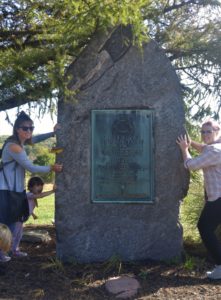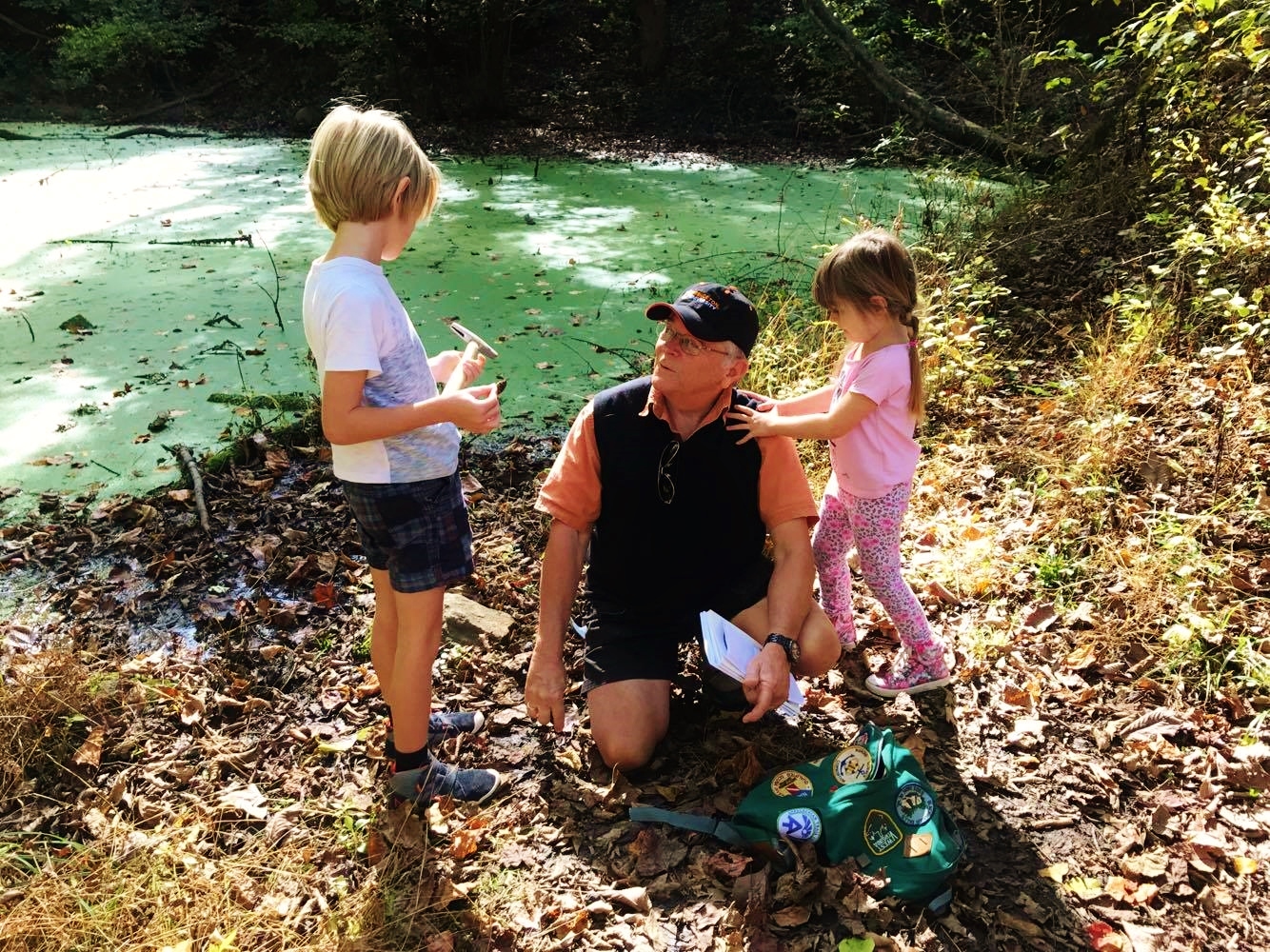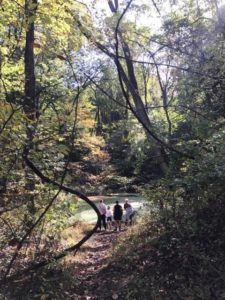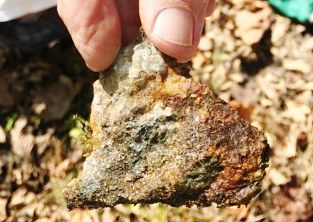Our search for the wondrous stones of a vanished Native American town.

This was an adventure to remember for grandson Dashiell, a budding geologist at age 7. The quest: Find where a Lenape Indian village once existed in Bucks County. Then collect rocks favored by the tribe due to their mineral charm. Cool.
Granddaughter Margaux, daughter Genevieve and her life-long pal Christine joined Dash and me for the outing. Our guide was June Olson. She knows Playwicki Farm Park in Lower Southampton better than a Garmin GPS locator and was one of the key community activists in the 1990s to convince the township to save the 110-acre farm. She assured us she would lead us to the right spot, a Colonial-era limestone quarry deep within the park’s old forest off Bridgetown Pike.

We met at Playwicki’s beautifully-preserved 18th century farmhouse and with special permission set off for the quarry on Preservation Trail, one of many nature walks. The trail passes the site of archeological digs that produced hints of the ancient Indian settlement of Playwicki Town. Excavations in 1893 by Henry Mercer, 1923 by state archeologists and 1993 by the Bucks County Conservancy turned up arrow heads, pottery, tools and other Indian artifacts. Though no absolute proof of the town’s exact location surfaced, the Pennsylvania Historical and Museum Commission in 1925 placed a 10-foot-tall stone monolith on the highway fronting the farm to memorialize the village.
It was William Penn who referenced “Playwicki” on a 1682 land grant he negotiated with the tribe. Two years later, Penn sold the tract to Christopher Taylor who leveled remnants of the village for an asparagus farm. The property over the next 80 years passed through three farming families. The last was Dutch farmer Simon Van Arstdalen who purchased it in 1764. For the next 173 years, six generations of his family worked the acreage. With the discovery of limestone near where the Indian village once stood, the family founded the Van Arstdalen Quarry which prospered for a number of years. By the 1900s, new owners took possession of the farm and in 1994, the township acquired all of it – the farmhouse, outbuildings, pastureland, forests and quarry. Playwicki Farm today represents the last large open space in Lower Southampton.
The name Playwicki is derived from the Lenape word “Pleu-ecke” which linguists say has two possible meanings, one being “the place of many turkeys.” But the other is for the running of the gauntlet by Indians who were paddled and poked with spears as they passed – a hazing rite called “ecke”, or “wicky”. Colonist thought it was cruel and asked the Lenape to desist. To them, however, it was just a game.
The Van Arstdalen family discovered in its quarry a rare rock formation identified in Colonial times as “Franklin Marble”. The Lenape viewed the marble as peculiar. To find such stones was the object of our adventure.

To our dismay on arrival, the long-dormant limestone pit was filled to the brim with water, topped with a thick layer of bright green watercress. A sign warned “No Swimming”. Who’d want to? Besides, the sign indicated the quarry plunged steeply into the depths. Around the basin, a heavy mat of forest droppings hid everything but the knob of a massive boulder barely protruding from the earth. Was it marble? We went to work with a couple of rock hammers. The stone was extremely hard. The forest soon rang out with strikes by Dash and me with Margaux elbowing in on the action. Tiny flakes flared from the rock. “This is so fun,” declared Dash. It took awhile but finally he chiseled a cleft in the boulder and broke off a small piece. Inside, graphite and pyrite inclusions sparkled in the sun, matching the description we had of Franklin Marble. This was it! June suggested we follow her deeper into the forest to the quarry’s former kiln where lime was prepared for market. The grand kids and I climbed a slippery slope to the top of the vine-covered furnace where we found small stones we split in two to reveal marble that we stowed in my backpack to wash up at home for further study.

Back down off the hillside, I explained to Dash and “Go Go” what they were holding in their hands – rocks a million years old. They were created 9 miles below where we stood. It was very hot down there. So hot it melted all the minerals together, forming marble. All these thousands and thousands of years later, they came to the surface during an ice age for us to find.
Kind of magical, when you think about it.
###
Sources of this column include “The Geology & Geography of New Jersey” by Kemble Widmer published in 1964 that discusses how Franklin Marble formed; information on the archeological digs from Jeff Marshall, president of Bucks County’s Heritage Conservancy; plus historical accounts available at Playwicki Farm where a children’s playground and picnic benches sit just off the main trail. More information at www.playwickifarm.org.
Carl LaVO, a retired Courier Times editor, can be reached at [email protected]. His new coffee table book“Bucks County Adventures” can be ordered online at his website, www.buckscountyadventures.org
